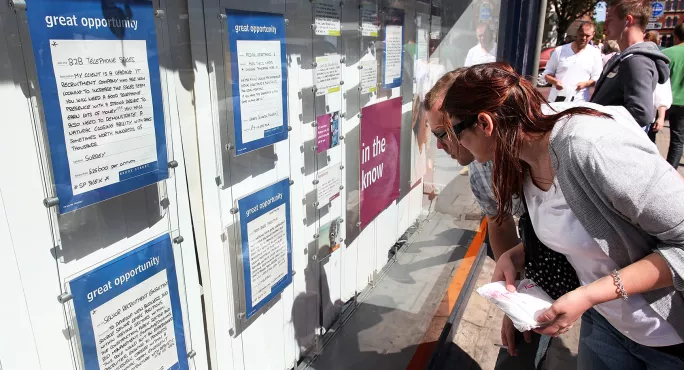- Home
- Leadership
- Staff Management
- 5 tips for your teacher CV and cover letter
5 tips for your teacher CV and cover letter

They say everyone’s favourite subject is themselves, but for most of us, when it comes to writing our teacher CV and cover letter, we can face a real challenge.
With recruitment season underway, there will be thousands of teachers taking to their laptops to draft a job application that they hope will be compelling and intriguing enough for them to be invited for an interview. That could be at a state school down the road or an international school on the other side of the world.
As someone who has read thousands of teacher CVs and led workshops on resume-writing for teachers, there are some common and simple issues that I regularly see people fall foul of.
So here’s how you can avoid those mistakes and ensure that you stand out from the crowd.
Tips for your teacher CV and cover letter
1. Make sure your CV catches the eye
A recruiter gets a first impression from the first few seconds they browse your CV.
This first impression may be superficial, but recruiters are only human. If you have multiple fonts, wide margins and too many colours, this detracts from the main message and makes it harder for someone to quickly and easily see why you should be a consideration for interview.
As such, while you should spend most of your time on the content of your CV, make sure the format looks professional, too. Avoid unusual fonts (Arial or Calibri work fine), use headings and bullet points in a consistent way, and think about where to present key information.
More on teacher job applications:
- Teacher job interviews: Six ways to stand out
- How to write an educational philosophy statement
- Five tactics for impressing in interview lessons
Including a photo can add a personal touch; most CVs that I receive do include one. On the other hand, it can create bias, conscious or otherwise, and shouldn’t be a requirement. Some schools specify whether they want a photo. Simply put: do what they ask.
2. Explain your successes
A teacher CV needs to highlight what you have achieved and the impact that your achievements have had.
Be ready to show off a little and be clear when listing specific things that you have done and what you have achieved. Ideally, show that they are clearly relevant for the job that you are applying for.
For your teaching role, this should not be simply saying, “I led on the teaching and learning for my subject” - that is a given.
Instead, explain how you boosted results, solved a problem or delivered consistent assessment outcomes for several years. Whatever achievements you list, ensure that they are truthful, provable and help you stand out.
What’s more, if you started an after-school club, ran professional development workshops or led on parent engagement meetings, then share that, too. This all adds up to a richer picture of you and why you might be a real asset to a new setting.
3. Give them what they want
Most job adverts ask for a CV to be no more than two pages and for cover letters to be one page. Sometimes a school may want you to dissect your CV and enter the same information into its own application form.
Or it might like you to provide a cover letter, your CV and four references, in that order and as a PDF.
Such requests may be off-putting, but they are, in part, subtle tests that a school is giving you - can you follow instructions? It may sound simple but do whatever the school asks.
You’d be amazed how many candidates simply ignore the instructions, which can count against you in a final assessment of applicants.
4. Personalise your cover letter
Your cover letter is a chance to expand on your CV and personalise your application, but many cover letters I read are far too generic. Make sure that you clearly link your cover letter to the job description and explain how you fit the school’s needs, with evidence, so that it gives a true sense of who you are.
It’s OK to have a cover letter template but if your letter could be copied and pasted into an application for a different school, it will be obvious.
Make sure there are specific references to the school that you are applying to. Checking the school’s social media to see what it has been doing recently and explaining how you could be a part of this is a great way to demonstrate that your cover letter has been given some thought - and it can help you learn more about a school, too.
As a final tip, always start by addressing the principal by name; you’ll find the name on the school website. Avoid the bland “Dear Principal” (or worse, “Dear Principle”, which I’ve had several times).
5. Proofread - three times
It’s worth triple-checking your teacher CV for typos and small errors, as they will stand out and can sink an otherwise strong application.
Ideally, read it aloud to hear what you’ve actually written - not what you think you’ve written - and get a friend or family member to go through a final draft as a final check.
Mark Beales is principal (middle years/diploma programme) at Osaka YMCA International School in Japan
You need a Tes subscription to read this article
Subscribe now to read this article and get other subscriber-only content:
- Unlimited access to all Tes magazine content
- Exclusive subscriber-only stories
- Award-winning email newsletters
Already a subscriber? Log in
You need a subscription to read this article
Subscribe now to read this article and get other subscriber-only content, including:
- Unlimited access to all Tes magazine content
- Exclusive subscriber-only stories
- Award-winning email newsletters
topics in this article



